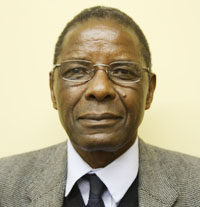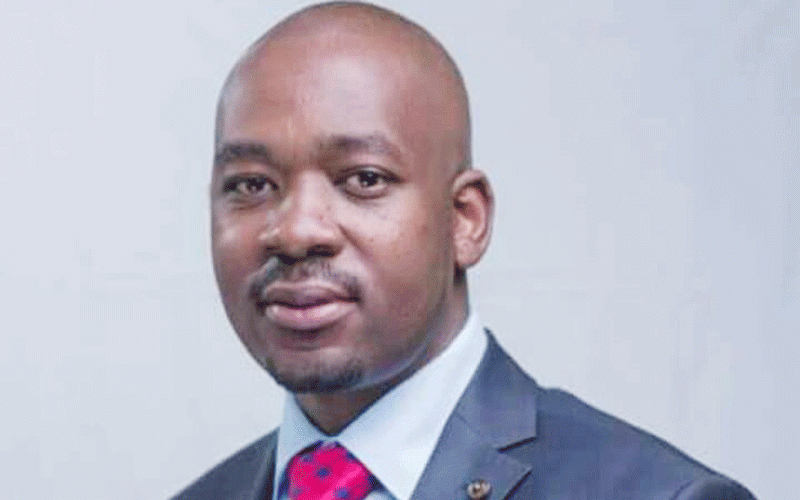
Forty years ago, one Albert Nhamoyebonde made his discreet entrance into local tennis.
BY MUNYARADZI MADZOKERE
Bothered by the fact that at that time tennis remained a preserve for the white minority, he set a goal for himself — to ensure the sport spread to the black communities in the high-density areas. Thanks to hard work and a dedicated spirit, Nhamoyebonde’s dream became a reality.
Three weeks ago the country’s now multi-racial tennis fraternity converged at the Harare Sports Club for the Albert Nhamoyebonde inaugural junior tennis tournament in which close to 150 junior tennis players from five different provinces participated.
The idea was to celebrate the 71-year-old administrator’s contribution to local tennis, which has seen his Mufakose Tennis Coaching Agency (MTCA) churn out hundreds of black tennis players, as well as hundreds of coaches since independence.
Standardsport caught up with the veteran coach and administrator, who is also the honorary Tennis Zimbabwe life vice-president, as he reflected on his 40-year journey in tennis, as well as the event which was held in his honour.
“I feel so honoured that a tournament was actually organised in recognition of my contribution to tennis in this country. I never knew that what I did had that much of an impact on people’s lives. I’m even more humbled that the guys [I coached] put together resources on their own without a major sponsor to stage such a successful tournament for me,” Nhamoyebonde said.
“It has always been my dream since I got into tennis 40 years ago to see black children having the opportunity to play tennis and choose a career in tennis and I am extremely happy I managed to achieve that in a way. More so, I was happy because out of the players who participated at the tournament last week, only a few were white and there were about four Asians, while the rest were blacks. Some even came from the rural areas where some coaches are breaking new ground in schools that do not even have tennis facilities,” he said.
- Chamisa under fire over US$120K donation
- Mavhunga puts DeMbare into Chibuku quarterfinals
- Pension funds bet on Cabora Bassa oilfields
- Councils defy govt fire tender directive
Keep Reading
After the success of last month’s event — the Albert Nhamoyebonde tournament — the organising committee is contemplating organising a similar tournament later this year, but this time involving senior players.
Nhamoyebonde — a biochemist by profession who works at Parirenyatwa Hospital — started playing tennis in 1976 when he was well past his prime in as far as getting to the top as a player was concerned, hence it did not take time for him to start improving his coaching credentials.
One fine afternoon in the early 80s, while driving through Mufakose, he saw a group of young boys playing tennis on the tarred road using planks. That is when the idea of setting up an academy in the area came to him.
“These kids were hitting the ball so well with planks and I thought ‘what if they had rackets’? After a brief chat with them, I went and gathered all the equipment I could get and they started training right away. In 1984, the Mufakose Tennis Coaching Agency was formed and we used borrowed facilities then.
“So we had to embark on building our tennis facility in Mufakose where the bulk of the young black tennis players lived. After failing to get our own land from the city council, we engaged a local school, Mufakose High 2 with the help of the then headmaster Kingstone Rudenya. We built four tennis courts and it [the school] became our base,” he said.
Though he lived in Queensdale, Nhamoyebonde would drive to Mufakose almost every day in between his work schedule to be with his pupils and would never miss tournaments during weekends.
MTCA eventually roped in former Davis Cup non-playing captain Claudio Murape (now late), his brother Richmore, Brian Kaseke, Derrick Manyange, Gift Nkomo and Lazarus Manjoro.
Also from the same stable arose top players in the form of Tendai Baleng, Godwin Madzima, Peter Nyamande, Nigel Badza, Shepherd Manyumbu and Elson Marondera, to mention but a few.
Nhamoyebonde reflects: “I remember well my very first group of black junior players that I took for a tournament in the mid 80s and it comprised the likes of Daniel Monchusi, Nkomo, Godwin Madzima as well as Baleng. They were the only black players at the competition held at Old Hararians. Since then, more black players have entered the [previously] white-dominated tennis competitions.”
His junior team entered the Mashonaland Tennis League, now the Harare Tennis League, beginning in the sixth division and climbing to the top league in just six years.
The first black player to win the Zimbabwe Open was Nhamoyebonde’s product — Martin Dzuwa — then only 16-years old, who won the singles title in 1995 before teaming up with Nyamandwe to scoop the doubles title the same year.
Nhamoyebonde managed the Coca-Cola Mufakose Junior Tennis tournament for close to 25 years, through which a lot of young talent was discovered.
Having joined the Tennis Association of Zimbabwe in 1982, Nhamoyebonde became vice-president of the association in 1987, before leaving two years later. He also served as the chairman of the Davis Cup committee in 1988.
“It was also very important to me that I also teach others how to coach so that we could be able to take the growth of tennis to other high-density suburbs and I am happy there are a lot of coaches not only in Zimbabwe but all over the world who came through me,” Nhamoyebonde said.
Some of the tennis coaches who learnt the trade from the veteran instructor include Richmore Murape, who is the chairman of the local coaches association and also runs his Ultimate High Performance Centre at Harare Sports Club, as well as Kenya-based Nyamandwe and Kuda Muchenje.
Peterhouse College coach and sports director Manjoro and Badza, who is based in South Africa, also came from MTCA, as well as Harare East Member of Parliament Terrence Mukupe and internationally-acclaimed umpire Manyumbu.
While he has been around to witness the fruits of his work and contribution, Nhamoyebonde would still love to see most schools in the high-density suburbs embracing tennis as one of the main sporting disciplines.
His wish is also to see tennis facilities being erected in the high-density suburbs, as well as in rural areas.










